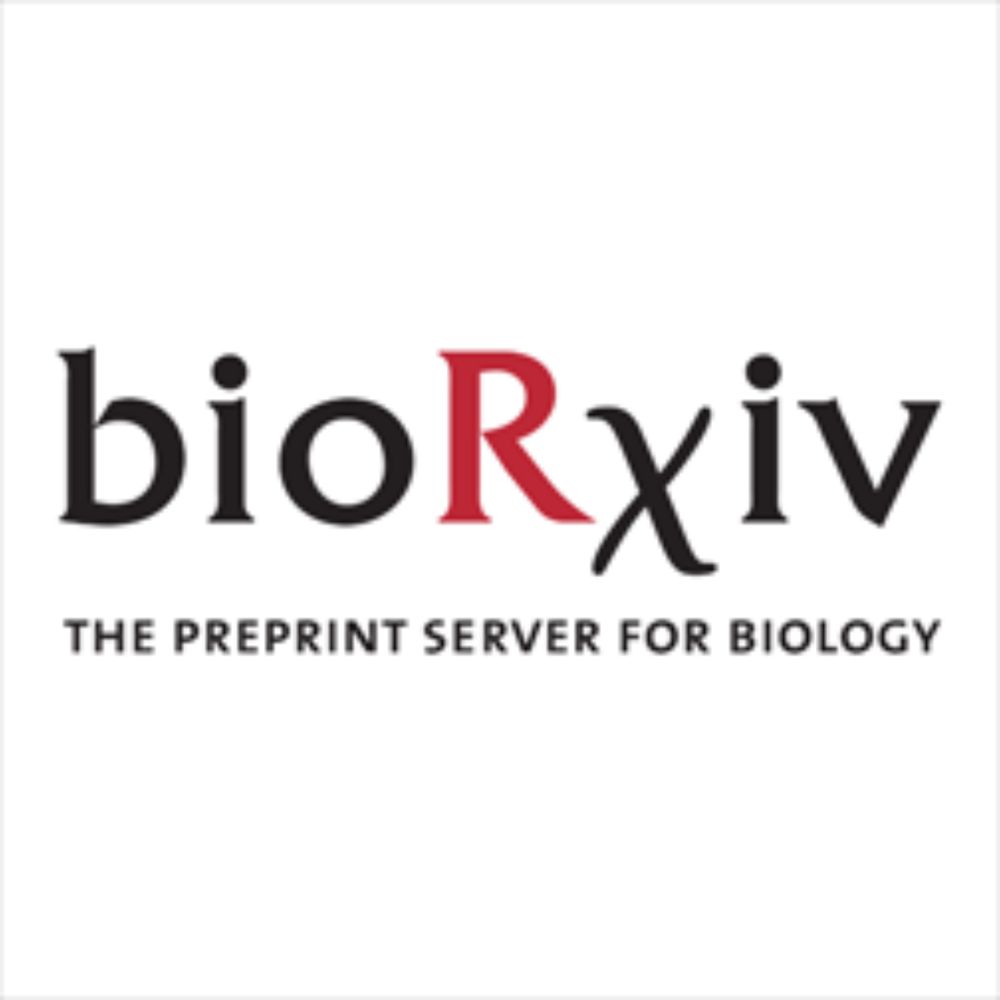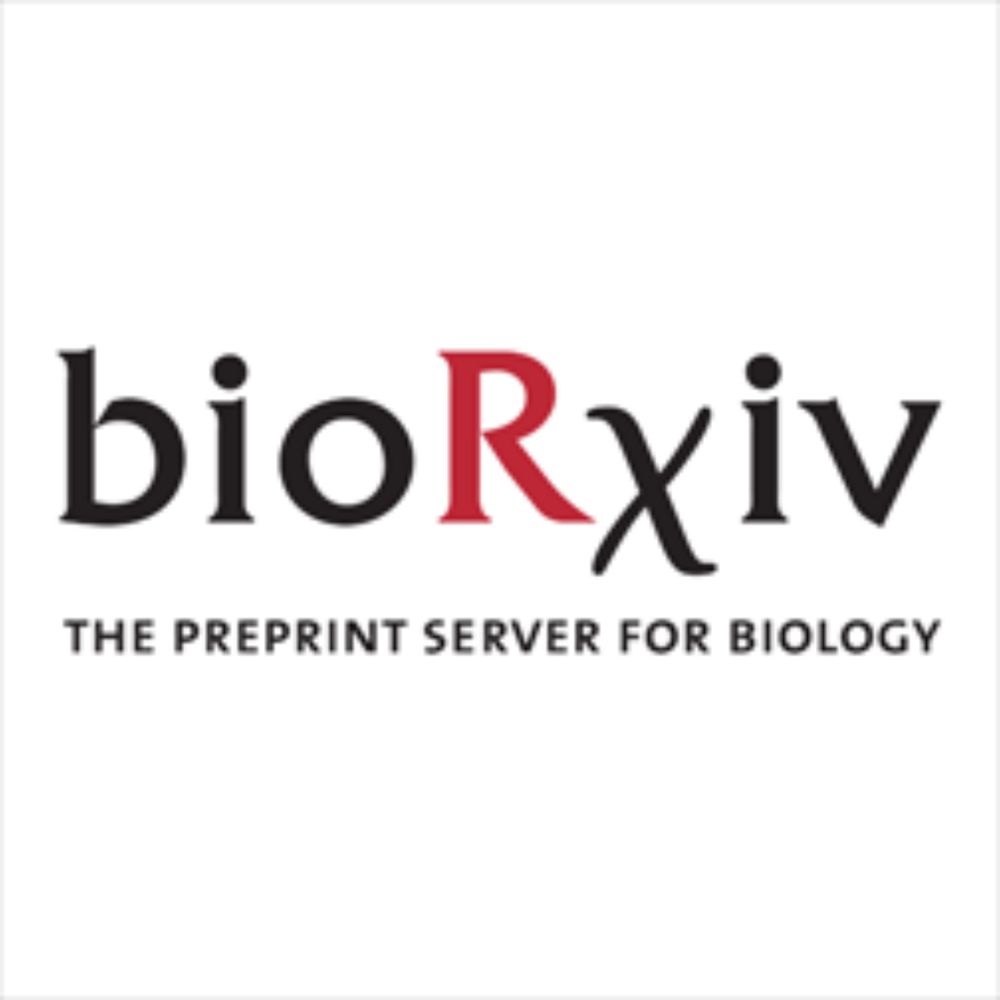
Two alternative isoforms of PRC2 accessory subunit AEBP2 modulate developmental Polycomb functions in opposite ways - with broadly-expressed AEBP2L acting as an intrinsic inhibitor in somatic cells
@adrianbracken.bsky.social @davidovichlab.bsky.social and colleagues
www.embopress.org/doi/full/10....
04.11.2025 12:51 — 👍 12 🔁 5 💬 0 📌 1
YouTube video by KeystoneSymposia
KSQA: Dr Karim-Jean Armache / Dr. Cigall Kadoch (Epigenetics and Gene Regulation)
@ckadoch.bsky.social and I are excited to welcome you to Geneva for the 2026 Keystone Symposium on Epigenetics and Gene Regulation in Health and Disease — short talk and poster slots are still open. Don’t miss the deadlines.
Video: youtu.be/sLfyuQuH8F0
03.11.2025 14:43 — 👍 13 🔁 7 💬 0 📌 0
2/ Done in collaboration with the lab of @adrianbracken.bsky.social, who wrote a great 🧵 explaining the work. bsky.app/profile/adri...
31.10.2025 22:42 — 👍 0 🔁 0 💬 0 📌 0
1/ 🚀 AEBP2 isn’t what we thought.
You were told that AEBP2 promotes PRC2 activity on chromatin.
We found the opposite: the most prevalent AEBP2 isoform inhibits PRC2 activity.
👉 surl.li/cgwqcq
A thread 🧵
31.10.2025 10:53 — 👍 40 🔁 16 💬 6 📌 2

Abstract extension flyer. Deadline extended to Friday 31st October
📣 Abstract Deadline Extended!
Due to popular demand, we’ve extended the submission deadline — giving you a few extra days to finalise your abstract.
Don’t miss out on being part of Lorne’s legacy!
👉 Submit today: www.lorneproteins.org
#LorneProteins #DeadlineExtended #ProteinScience
26.10.2025 22:59 — 👍 5 🔁 3 💬 0 📌 1

Screenshot of tweet from the ARC saying they will announce DP26 outcomes on Tuesday 28th Oct, and LP25r1 outcomes on Wednesday 29th.
ARC says Discovery Projects outcomes will be tomorrow (Tuesday). Linkage Projects (2025, round 1) on Wed. Over past ~year, it's often been at about 11am (Canberra).
My bot will pick up the change to RMS & post immediately.
ARC should email outcomes to lead CIs, but might take an 1hr or so for DPs
26.10.2025 23:17 — 👍 52 🔁 28 💬 1 📌 3

EEE meeting is BACK! Early Embryogenesis & Epigenetics conference in Berlin 02/2026.
Checkout great program and over 12 slots for (not so) short talks for submitted abstracts!. Early registration now open -
w.molgen.mpg.de/embryo2026
28.09.2025 00:00 — 👍 29 🔁 12 💬 0 📌 1

Genes and Gin: A Synthetic Biology Social 🎉
Join us for a fun night of Genes and Gin - learn to play the synthetic card game "Remediate!", created by a group of researchers within our Centre.
Make sure you register for catering:
www.eventbrite.com.au/e/genes-and-...
See you on the rooftop!
18.09.2025 00:58 — 👍 2 🔁 1 💬 0 📌 0
Many of the most complex and useful functions in biology emerge at the scale of whole genomes.
Today, we share our preprint “Generative design of novel bacteriophages with genome language models”, where we validate the first, functional AI-generated genomes 🧵
17.09.2025 15:03 — 👍 49 🔁 20 💬 3 📌 4

The PRC2-associated factor EPOP is required for Hox gene regulation during axial development in mice
The Polycomb repressive complex 2 (PRC2) is an essential modulator of gene repression. We previously reported that, in mouse embryonic stem cells, PRC…
Finally out on @devbiol.bsky.social: we find that Epop mutant mice have near-perfect Polycomb phenotype (orderly posterior shift of vertebral identity🩻) linked to accelerated HOX clock⏰.
Bonus: Epop has maternal effect!
Study co-led by the the labs of Bernie Payer and @lucianodicroce.bsky.social
25.08.2025 19:44 — 👍 22 🔁 3 💬 2 📌 3

We are excited to share our new preprint demonstrating that nucleic acid interactions with SUZ12 constrain PRC2 activity, establishing a kinetic buffer essential for targeted gene silencing and revealing vulnerabilities in diffuse midline gliomas.
www.biorxiv.org/content/10.1...
23.07.2025 23:38 — 👍 48 🔁 19 💬 1 📌 0
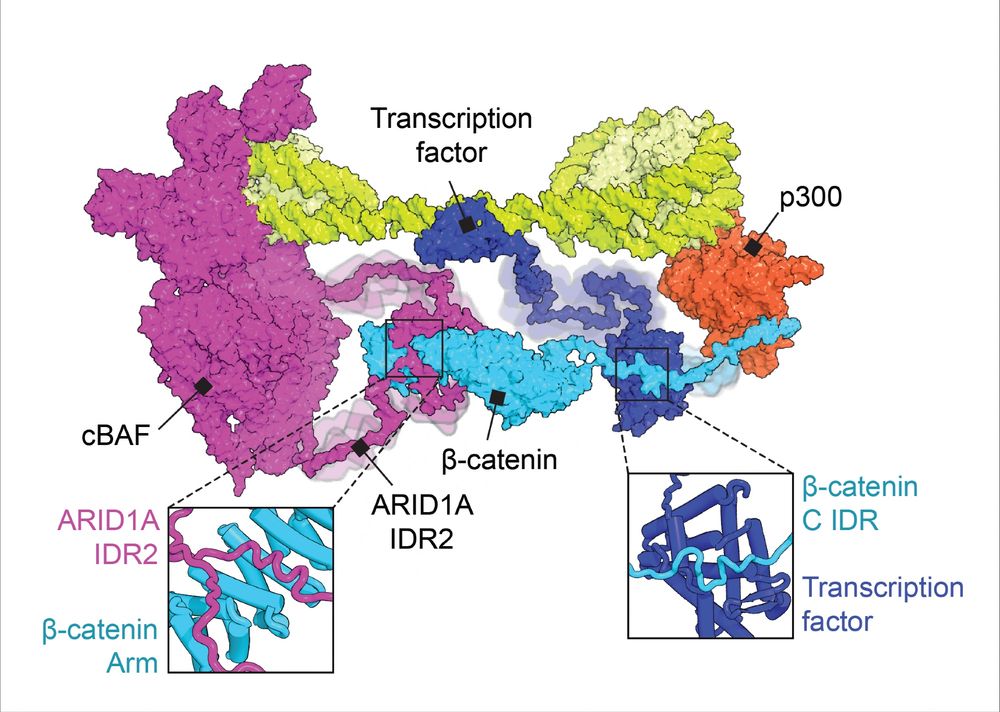
How do chromatin remodelers use #IDRs to find TF binding partners? In our new Molecular Cell paper, we show that β-catenin is an adaptor that links SWI/SNF (cBAF) subunit ARID1A with binding partners via IDR-domain interactions.
www.cell.com/molecular-ce...
22.07.2025 18:42 — 👍 89 🔁 34 💬 11 📌 4
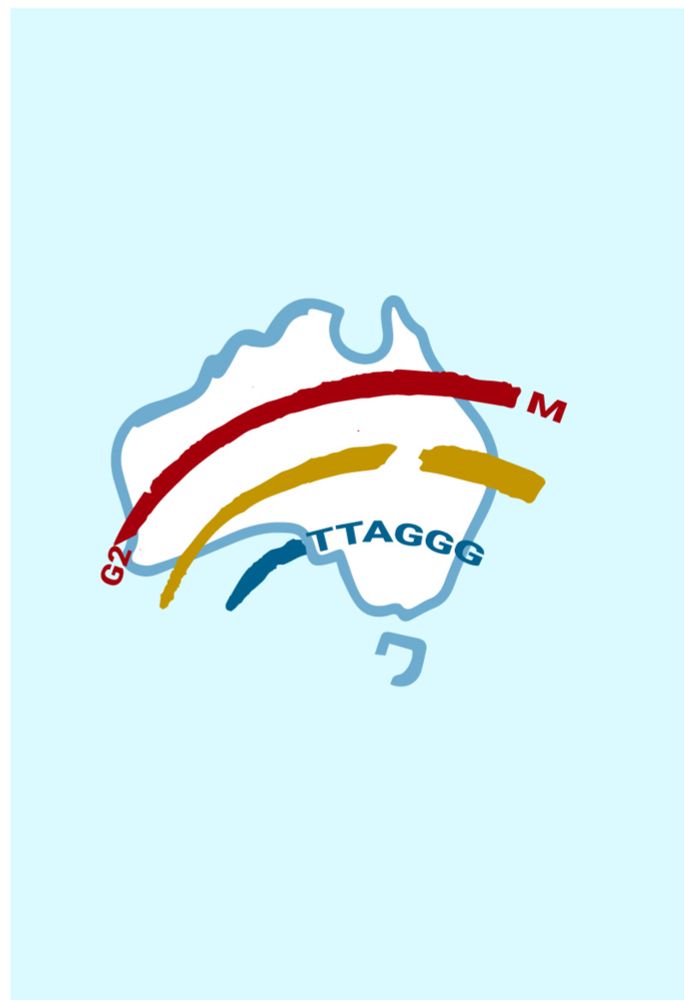
Australian Cell Cycle, DNA repair and Telomere Meeting
October 20-22, 2025
Register for the Australian Cell Cycle, DNA Repair & Telomere Meeting in beautiful Melbourne October 19-22, 2025. Plenty of slots for selected abstracts and posters. High praise last time from Piotr Sicinski: "en par with a Gordon conference for science and interaction"
www.australiancellcycle.org
22.07.2025 10:42 — 👍 8 🔁 4 💬 0 📌 1
Happy to announce a new preprint from my lab looking in to the establishment of polycomb domains in early fly development and contributions from pioneer factors Zelda and GAGA-factor.
03.07.2025 21:44 — 👍 20 🔁 7 💬 0 📌 0
✨Excited to share my first postdoc paper on chromatin remodeler, MORC2 ✨
Using #cryoEM & #singlemolecule imaging, we reveal how MORC2 compacts DNA 🔬🧬
Thanks to all collaborators from @wehi-research.bsky.social @ccemmp-outreach.bsky.social Uni Melb, Monash Uni, Seoul National Uni and Texas Uni!
02.07.2025 06:19 — 👍 13 🔁 5 💬 0 📌 0

New from our lab & @harrisonflylab.bsky.social: Drosophila models of H3 K27M & EZHIP reveal conserved chromatin regulators that buffer PRC2 inhibition. An in vivo screen highlights how developmental defects can be rescued despite global H3K27me3 loss.
doi.org/10.1101/2025...
27.05.2025 15:29 — 👍 22 🔁 7 💬 1 📌 0

The human proteome with direct physical access to DNA
Zero-distance photo-crosslinking reveals direct protein-DNA interactions in living
cells, enabling quantitative analysis of the DNA-interacting proteome on a timescale
of minutes with single-amino-aci...
Excited our paper is out in Cell @cp-cell.bsky.social!
🧬⚡ DNA photo-crosslinking proteomics in living cells
🎯 Pinpoints protein-DNA interactions to single amino acids
🌎 Globally quantifies DNA binding for >1800 proteins at a timescale of minutes
🔗 www.cell.com/cell/fulltex...
🧵
23.05.2025 07:06 — 👍 65 🔁 24 💬 4 📌 1
Now published! Big congrats to first author @gginell.bsky.social
We are actively working improving/updating various aspects of FINCHES; don't hesitate to reach out if you run into issues, have questions.
www.science.org/doi/10.1126/...
23.05.2025 11:31 — 👍 120 🔁 46 💬 8 📌 2
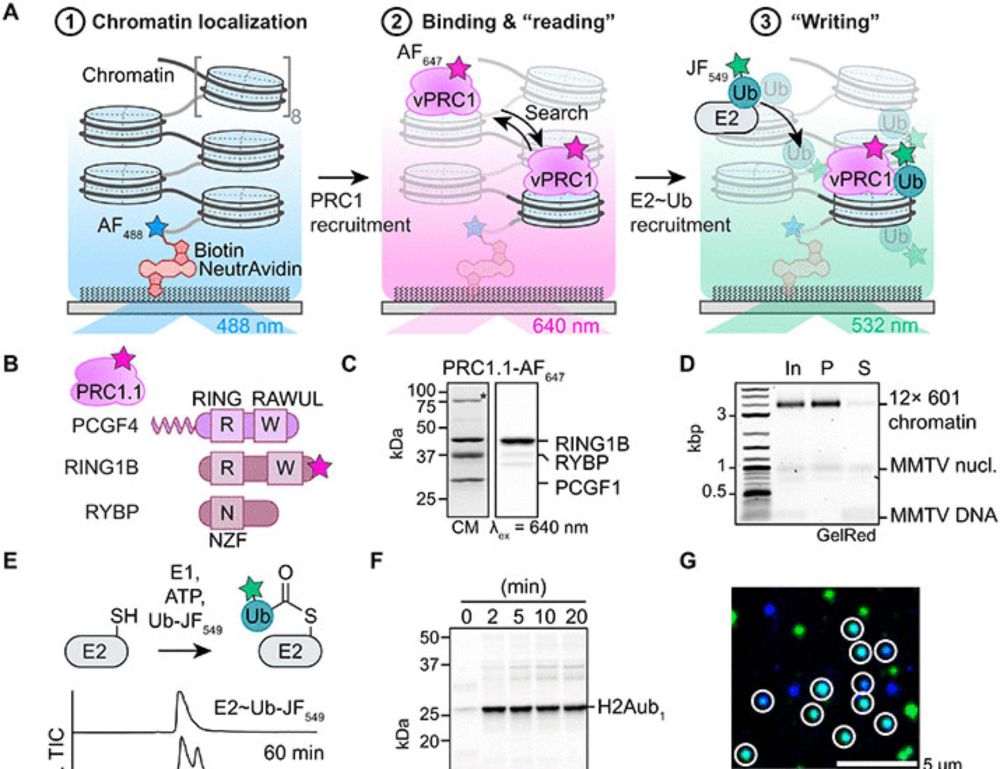
Single-molecule analysis reveals the mechanism of chromatin ubiquitylation by variant PRC1 complexes
Single-molecule experiments show that active conformation formation controls chromatin ubiquitylation kinetics by variant PRC1.
Our new study of chromatin ubiquitylation by variant PRC1 on the single-molecule scale: We visualize directly how vPRC1 ubiquitylates neighboring nucleosomes during a single binding event, showing a potential mechanism how H2Aub domains are established.
www.science.org/doi/10.1126/...
21.05.2025 18:59 — 👍 74 🔁 29 💬 2 📌 0

Single-molecule analysis reveals the mechanism of chromatin ubiquitylation by variant PRC1 complexes
Single-molecule experiments show that active conformation formation controls chromatin ubiquitylation kinetics by variant PRC1.
Check out our new study of chromatin ubiquitylation. @alexateslenko.bsky.social visualized directly at single molecule scale how vPRC1 ubiquitylates neighboring nucleosomes. These results suggest potential mechanism on how H2Aub domains are established. 👇👇👇
www.science.org/doi/10.1126/...
22.05.2025 10:47 — 👍 31 🔁 8 💬 0 📌 2
Check out this 🧵 from @eimearlagan.bsky.social on our new Molecular Cell @cp-molcell.bsky.social paper! We show how the H3K27M Oncohistone reprograms chromatin in DMG, creating a specific dependency on CBX4/PCGF4-containing forms of cPRC1 👇
21.05.2025 17:22 — 👍 40 🔁 15 💬 0 📌 0
Biochemist fascinated by visualizing biological processes with the finest spatiotemporal detail; Understand the human immune system to guide novel approaches for combating viral infections and cancer; Postdoc at Cissé Lab / MPI-IE
New PI @mpi_ie, interested epigenetics, development, homologous chromosome interactions and their function (she/her)
Fosters productive collaborations, rigorous debate, and enduring friendships between RNA scientists across Colorado. Fueled by 🍕, 🍺, and 🧬 since 1986.
🇲🇹 🇬🇧 Exploring the weird and wonderful world of #redalgae www.borglab.org
PhD in Bickmore Lab - https://orcid.org/0000-0001-7025-7002
Institute of Genetics and Cancer, Edinburgh 🧬
Retired researcher in Developmental Genetics, Evo-Devo. Drosophila. Polycomb Group. (PRC genes. Finder of "polyhomeotic"), Nuclear transplantation in the egg. Cell mosaics and chimeras. Epigenesis in Drosophila. CSIC --> CNRS. Hobby: mosaics.
We are the Ting Wu Lab @ HMS. Our laboratory studies how chromosome behavior and positioning influence genome function, with implications for gene regulation, genome stability, and disease.
Managed by WuLab members
https://www.transvection.org/home
Scientist and medical doctor. Biology AI/ML methods, gene regulation, DNA sequence models, single cells. Doing a PhD in computational biology at @molgen.mpg.de.
Assistant Professor of Nutritional Sciences UW-Madison studying the genomics of inflammatory disease and vitamin D metabolism.
All views and opinions are my own and not reflective of the University of Wisconsin-Madison. @UWmadison
Incoming postdoc in Claudia Bank’s lab. Promoters, emergence, fitness landscapes, dogs 🐶 and triathlon 🏊 🚲 🏃. He/him 🏳🌈.
timothyfuqua.com
Faculty in Genome Sciences at the University of Washington focusing on gene regulation tech dev, especially in plants.
PhD student in the San Roman lab in the Molecular Genetics and Microbiology program at Duke Univerity🧬 University of Vermont ‘23 ⛰️
PI at the University of Dundee / Pre-implantation development / Genomics / TFs / Chromatin / Biochemistry / Cryo-EM
Postdoc: MPIB, IMBA
Ph.D: Waseda Univ.
Google Scholar: https://scholar.google.com/citations?hl=ja&user=tw4M2dgAAAAJ
Professor of Genetics & Development, Columbia University
Genomics nerd, lover of fiction books & cookbooks.
Epigenetic memory and Reprogramming.
Formerly PhD in Eva Hörmanseder's Lab at Helmholtz Munich.
Post-doc at TAGC lab | Inserm Marseille
Interested in epigenetics, genome regulationS and structure in plants and humans. I love surf and food. 🇨🇴🇧🇷
PhD student @EPFL @LCBM_EPFL interested in #Chromatin and #StructuralBiology 🔬🧬
Postdoc@King's College London, RNA Biology.
PhD@Uni of Birmingham, UK.
MS Molecular Biology & Functional Genomics@Uni of Trieste and ICGEB, IT.
Geneticist working on RNA metabolism. Epigenetics, bioinfo and food enthusiast. 🪴 She/her.



















